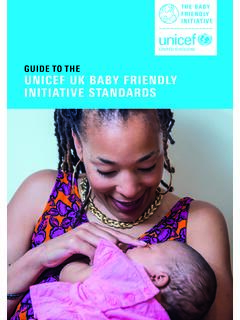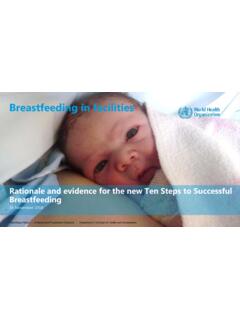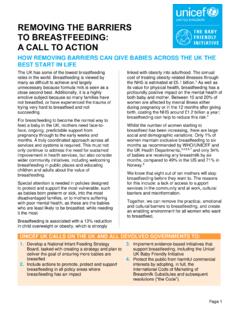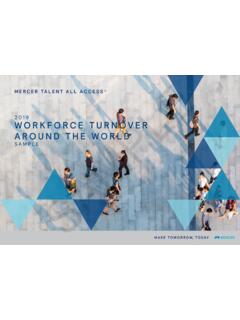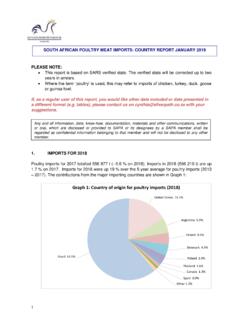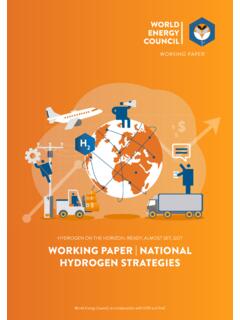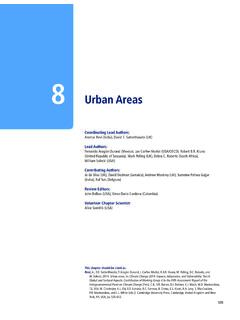Transcription of A RIGHTS-BASED ANALYSIS OF YOUTH JUSTICE IN THE …
1 SUMMARY AND INFOGRAPHICSA RIGHTS-BASED ANALYSISOF YOUTH JUSTICE IN THE UNITED KINGDOM2A RIGHTS-BASED ANALYSIS OF YOUTH JUSTICE IN THE UNITED KINGDOM: REPORT AND RECOMMENDATIONSFOREWORD .. 4 INTRODUCTION .. 5UK YOUTH JUSTICE INFOGRAPHICS .. 6 KEY REPORT FINDINGS FOR: SCOTLAND .. 8 WALES .. 12 ENGLAND .. 15 NORTHERN IRELAND .. 20 JERSEY .. 23 ENDNOTES .. 24 CONTENTSR eport AuthorThis report was compiled by Aaron Brown, YOUTH JUSTICE Specialist at Unicef UK. Prior to joining Unicef UK, Aaron completed a PhD in YOUTH JUSTICE at Swansea University. Before entering academia, he spent time working in the UK Parliament. 4A RIGHTS-BASED ANALYSIS OF YOUTH JUSTICE IN THE UNITED KINGDOM: SUMMARY AND INFOGRAPHICSThis most welcome report comes at the beginning of a periodic review (2021 22) by the UN Committee on the rights of the Child of the UK State Party s implementation of the Convention on the rights of the Child. In past periodic reviews, it has already been seen that devolution within the UK has enabled differences to emerge in approaches to and extent of implementation.
2 There are benefits in this, but it brings complexity in terms of accountability. Unicef UK s support for non-governmental reporting within the UK has been pivotal in navigating this complexity, and this report makes a further, important contribution. Wales and Scotland have, unlike Northern Ireland, enjoyed uninterrupted devolved government for over two decades, and in both countries, explicit promotion of the Convention is a consistent theme in public policy and law reform. This is evident in relation to strategies on children s social services, education, care, child poverty and structures for civic participation as well the area with which this report is concerned: YOUTH JUSTICE . Efforts to protect, respect and fulfil the human rights of children must recognise the interdependence and connectedness of these several fields. Links between socio-economic deprivation, exclusion from education, family instability and offending are very well established.
3 Applying to this fact the lens of the Convention s requirements, we can see that where children s rights to protection, care, inclusive education, adequate accommodation, social security and voice are delivered, there will be fewer children involved in the YOUTH JUSTICE system. Within the YOUTH JUSTICE system, they will be treated as children first, offenders second . This report delivers a much-needed, in-depth and up to date account of how the systems of YOUTH JUSTICE within the UK are performing against that standard. The report evidences many encouraging developments and will be a valuable resource for learning from the different progressive experiences and approaches. There remain, however, some glaring contradictions, most notably in the persistence of low minimum ages of criminal responsibility which are out of step with the way in which children are treated in civil and administrative proceedings in the UK, with minimum ages of criminal responsibility in comparable European countries and of course, with the requirements of the Convention.
4 The report will undoubtedly assist in efforts to hold the governments of the UK to account for their implementation of the Convention. It is to be hoped that it will be embraced by duty-bearers at all levels as a solid foundation to inform future programmes of work. Professor Jane Williams Observatory on Human rights of Children Hillary Rodham Clinton School of Law Swansea University, October 22, 2020 FOREWORD 5A RIGHTS-BASED ANALYSIS OF YOUTH JUSTICE IN THE UNITED KINGDOM: SUMMARY AND INFOGRAPHICSY outh JUSTICE processes and practices should never operate to undermine children s rights , but instead, should always seek to empower and uphold them. It is Unicef UK s belief that a YOUTH JUSTICE system that consistently works in children s best interests and actively promotes their rights , will lead to better, fairer and more beneficial outcomes for children and wider society. This Summary and infographic document is intended to complement the full version of the report.
5 It provides a snapshot of key YOUTH JUSTICE statistics, along with the key findings and recommendations to emerge from the ANALYSIS undertaken. The full version of the report represents Unicef UK s first examination of YOUTH JUSTICE issues to date and contained within it are a series of recommendations (45 in total) outlining where Unicef UK believes positive and progressive change is required in order to ensure the rights of children who are in contact with the law are protected and RIGHTS-BASED ANALYSIS OF YOUTH JUSTICE IN THE UNITED KINGDOM: SUMMARY AND INFOGRAPHICSUK YOUTH JUSTICE INFOGRAPHICSThe nations of the United Kingdom have the LOWEST ages of criminal responsibility in of Cyprus14 Ireland12 Estonia14 Netherlands12 Germany14 Scotland12 Greece14 England & Wales10 Hungary14 Northern Ireland10 Minimum age of criminal responsibility (MACR) across Europe. There was not a single establishment that we inspected in England and Wales in which it was safe to hold children and young people.
6 HM Chief Inspector of Prisons, 20172 In 2020, concerns continue to persist around: Use of solitary confinement High levels of self-harm High numbers of Restrictive Physical Interventions (RPI) High levels of violence7 One in three children in secure care in Scotland is from outside the 67% Residents from outside ScotlandResidents from within ScotlandIn 2018 19, males made up 91% and females 9% of young people held in Northern Ireland s Juvenile JUSTICE More than 70% of children being held in Scottish Young Offender Institutions are untried or awaiting 25% 11% 9% BlackMixedAsianandOtherWhite A quarter of children in custody are black. This proportion is five times higher than the general England and Wales, black children were over 4 times more likely to be arrested than white children in ,78A RIGHTS-BASED ANALYSIS OF YOUTH JUSTICE IN THE UNITED KINGDOM: SUMMARY AND INFOGRAPHICSThe ANALYSIS undertaken within the Scotland chapter of the report identifies a number of progressive features of Scottish YOUTH JUSTICE practice (or elements that directly affect YOUTH JUSTICE practice).
7 These include: Introduction of the UNCRC (Scotland) (Incorporation) Bill. Emphasis on prevention and diversion via Early and Effective Intervention and the Children s Hearings System. Launch of the Scottish Government Consultation on raising the age at which a young person can be referred to a children s hearing from 16 to 18. Introduction of the Secure Care Pathway and Standards Scotland . Progressive recommendations particularly as they relate to YOUTH JUSTICE outlined in the Independent Care Review. Efforts to reduce school exclusions. However, the Scotland chapter of the report similarly identifies a number of areas of concern where the rights of children in contact with the law are currently being undermined. The key areas of concern are: Minimum age of criminal responsibility set at 12 years old. Lack of routine direct child participation within the Early and Effective Intervention approach. Appearance of children under age 18 in adult courts in Scotland (particularly in respect of 16- and 17-year-olds).
8 Identification in the media of children under 18 years of age who have committed criminal offences. Potential for tasers to be used on children in Scotland. Welfare of children who are on remand in young offender institutions. Use of solitary confinement in young offender institutions. Impacts of COVID-19 on children held in YOUTH detention Practice of placing children from outside Scotland in Scottish secure care accommodation away from their home locations, and with an associated impact on secure care provision for Scottish children. Lack of robust, publicly available statistical data relating to children s interaction with specific stages of the YOUTH JUSTICE KEY REPORT FINDINGS 9A RIGHTS-BASED ANALYSIS OF YOUTH JUSTICE IN THE UNITED KINGDOM: SUMMARY AND INFOGRAPHICSRECOMMENDATION 1 Unicef UK recognises that progress has been made in respect of the minimum age of criminal responsibility (MACR) in Scotland. However, Scotland s current MACR does not meet the standard of at least 14 years of age outlined in General Comment Unicef UK recommends that the Scottish Government amend MACR to at least 14 years of age in line with General Comment at the earliest opportunity.
9 This would strongly correspond with the intentions of the UNCRC (Scotland) (Incorporation) Bill to prioritise the rights of children in domestic legislature. RECOMMENDATION 2 Unicef UK recognises that Early and Effective Intervention (EEI) is an important diversionary mechanism for filtering children away from the Children s Hearings System (and formal measures). However, we note that there is a lack of direct child participation within the UK therefore recommends that the Scottish Government revise future EEI guidance to directly include contributions from children (UNCRC 1989 Article 12) within the workings of the EEI process. RECOMMENDATION 3 Unicef UK is concerned that the Children s Hearings System approach is currently being undermined by the appearance of children under 18 years of age within the adult JUSTICE system and courts in Scotland. Unicef UK recommends that all children under 18 years of age should be treated as children and should be situated in a child JUSTICE system which is specifically designed to cater for their needs.
10 RECOMMENDATION 4 Unicef UK recommends that the following actions in relation to the use of tasers and police custody be carried out:1. The Scottish Government should prohibit the use of tasers on children in Scotland who are under 18 years of Police Scotland should make statistical data (disaggregated by age, gender and ethnicity) publicly and consistently available relating to the number of children subjected to use of force, use of restraint and strip-searching when in police custody. RECOMMENDATION 5 Unicef UK recommends that the following action be undertaken in relation to children s anonymity:The Scottish Government should commit to ensuring the anonymity of all children under 18 years of age who come into SCOTLAND: KEY RECOMMENDATIONS The following recommendations are contained with the Scotland chapter of the report: 10A RIGHTS-BASED ANALYSIS OF YOUTH JUSTICE IN THE UNITED KINGDOM: SUMMARY AND INFOGRAPHICS contact with the law and appear at Scottish courts - regardless of the offence they have committed.



